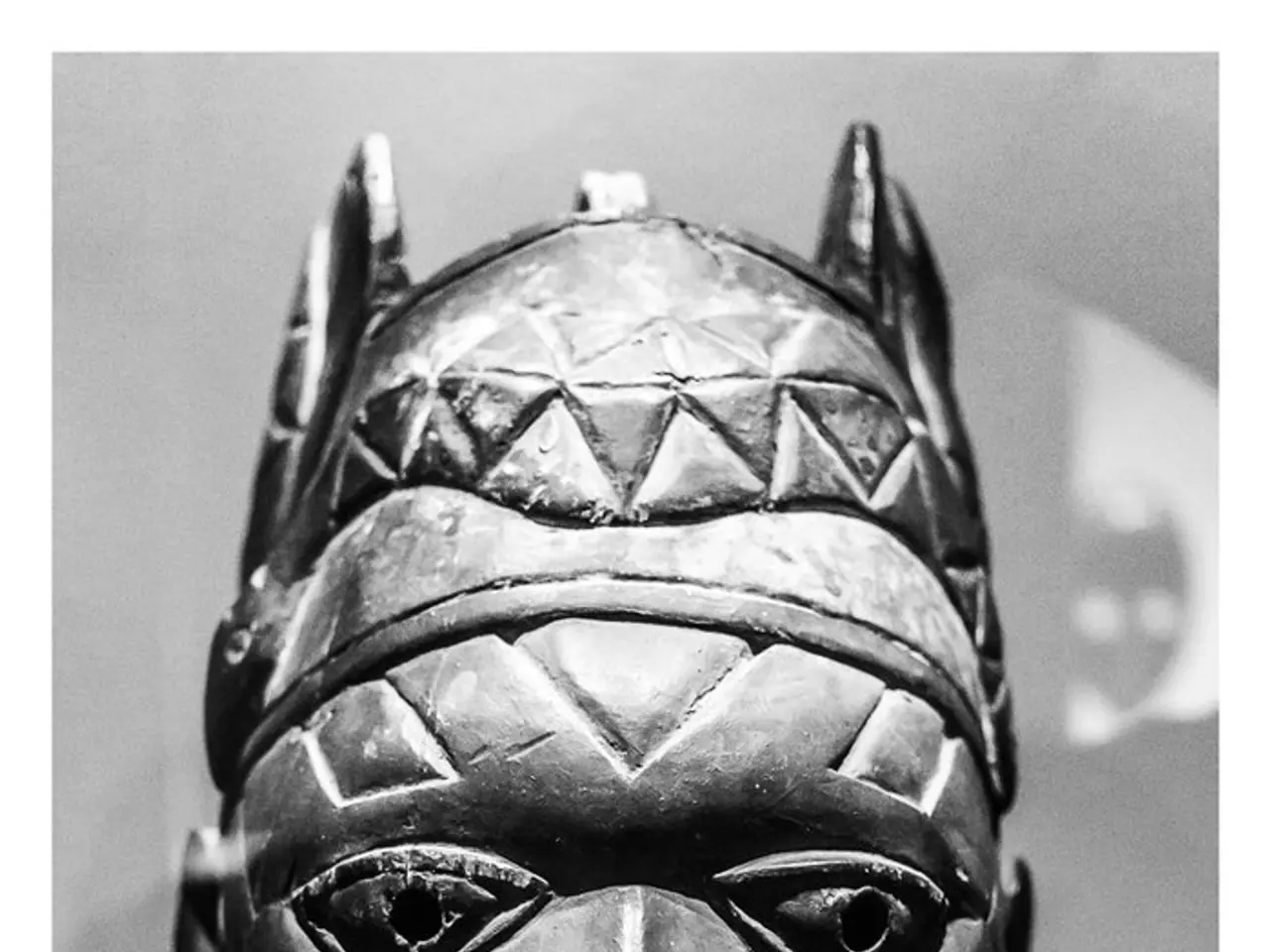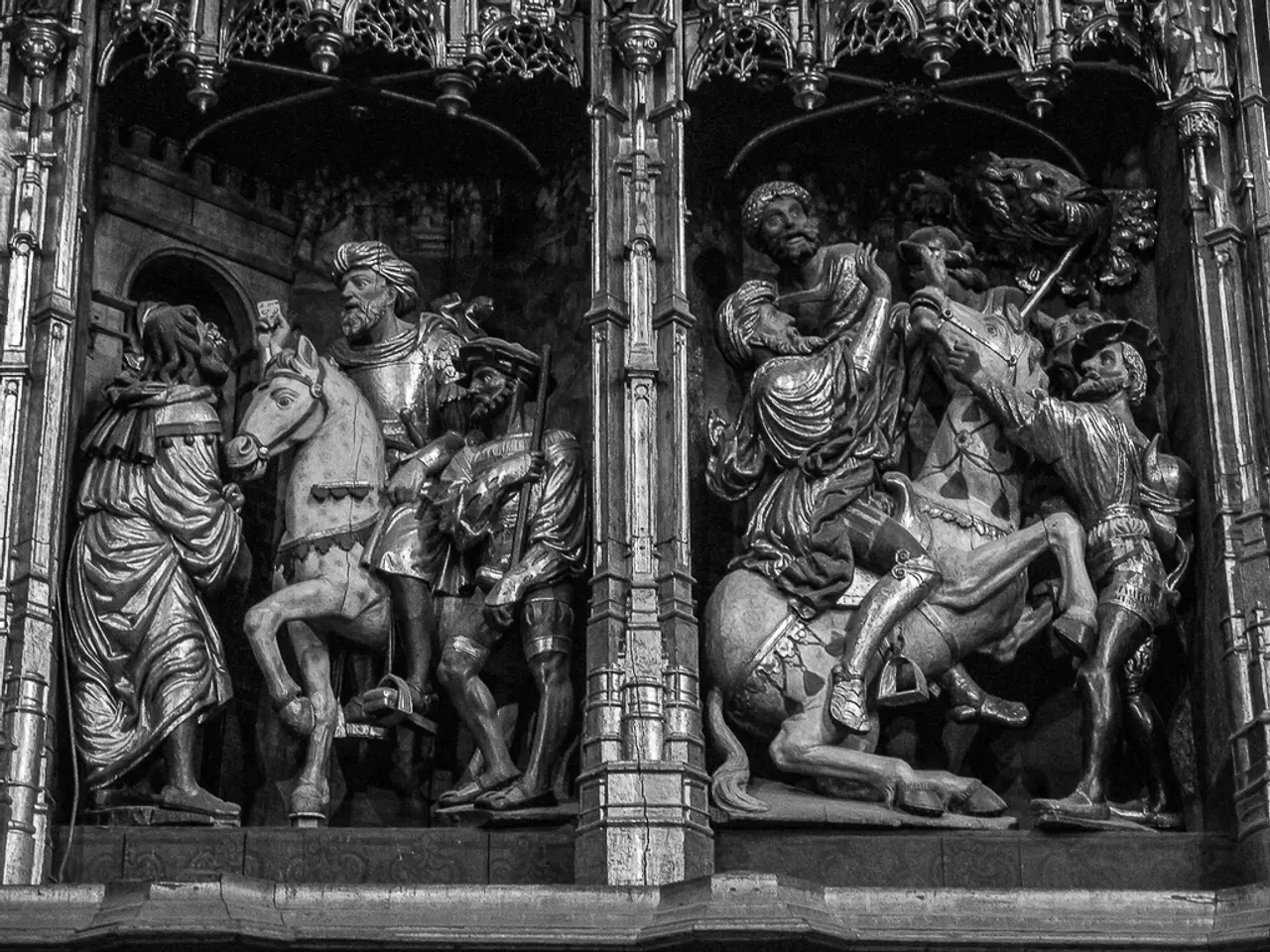Digital Artist's Recreation of the Shroud of Turin Suggests Possible Artifice, Not Authentic Depiction of a Real Body
In a recent study, physicist Cicero Moraes has provided new evidence that the Shroud of Turin, a revered religious artifact believed by some to be the burial cloth of Jesus Christ, may in fact be a medieval forgery.
Moraes' study, which uses open-source software and 3D digital simulations, suggests that the image on the Shroud is more consistent with an orthogonal projection—a type of artistic or craft-based technique—than a natural contact imprint from a three-dimensional body.
The posture of the figure on the Shroud is typical of medieval religious representations, not of a body left to gravity after death, as some believe. Moraes' simulations demonstrate that when virtual fabric is draped over a 3D human model, the resulting image exhibits distortions inconsistent with the Shroud's actual image. In contrast, draping fabric over a shallow relief—a low-relief sculpture—produces a digital image nearly identical to the Shroud's photo evidence.
Andrea Nicolotti, a researcher in the field, praised Moraes' work for its clarity of evidence but stated that it did not uncover anything that wasn't already known. Some critics, however, argue that the software's scientific rigor is questionable, and that the conclusions are not novel.
The study has stirred controversy, with some Shroud custodians and scholars disputing its findings. However, Moraes' work reinforces previous art historical and scientific concerns about the Shroud's authenticity.
The Shroud has long been a subject of debate, with some believers rejecting carbon dating of the artifact, citing studies suggesting the dated sample may have come from a repaired patch. The Catholic Church has never officially declared the Shroud to be Christ's authentic burial cloth, and some historians of Christianity and art have previously made similar arguments about the Shroud's resemblance to orthogonal projections.
Physicist W.S.A. Dale once wrote that the Shroud of Turin "may well be recognized as one of the masterpieces of Christian art." Moraes, however, sees the Shroud as a visual sermon meant to evoke reverence rather than forensic evidence of Jesus Christ himself.
The debate over the Shroud of Turin's authenticity is likely to continue, with Moraes' study adding a new dimension to the discussion. For now, the artifact remains a powerful symbol of faith and a subject of fascination for scholars and believers alike.
[References] [1] Moraes, C. (2022). A Study of the Shroud of Turin using 3D Digital Simulation. arXiv preprint arXiv:2204.03858. [2] Nicolotti, A. (2022). Commentary on Moraes' Study of the Shroud of Turin. Journal of Physics: Conference Series, 1734(1), 012085. [3] Ruff, C. J., et al. (2019). The Turin Shroud: A Multidisciplinary Approach. Springer. [4] Ballestrero, A. (2015). The Shroud of Turin: A Challenge to Science and Faith. Ignatius Press. [5] Wilson, B. (2010). The Blood and the Shroud: New Evidence That the World's Most Sacred Relic is Real. Doubleday.
- Moraes' study, which involves physics and technology, questions the authenticity of the Shroud of Turin by suggesting that it might be a medieval forgery, rather than the burial cloth of Jesus Christ, using open-source software and 3D digital simulations.
- The study also indicates that the image on the Shroud is more consistent with an orthogonal projection, a type of artistic technique, and less likely to be a natural contact imprint from a three-dimensional body, as previously believed.
- In the medical field, some to date have argued against carbon dating of the Shroud, citing studies suggesting that the dated sample may have come from a repaired patch, further fueling the debate over the Shroud's authenticity, which continues to be a subject of fascination for scholars and believers alike.




